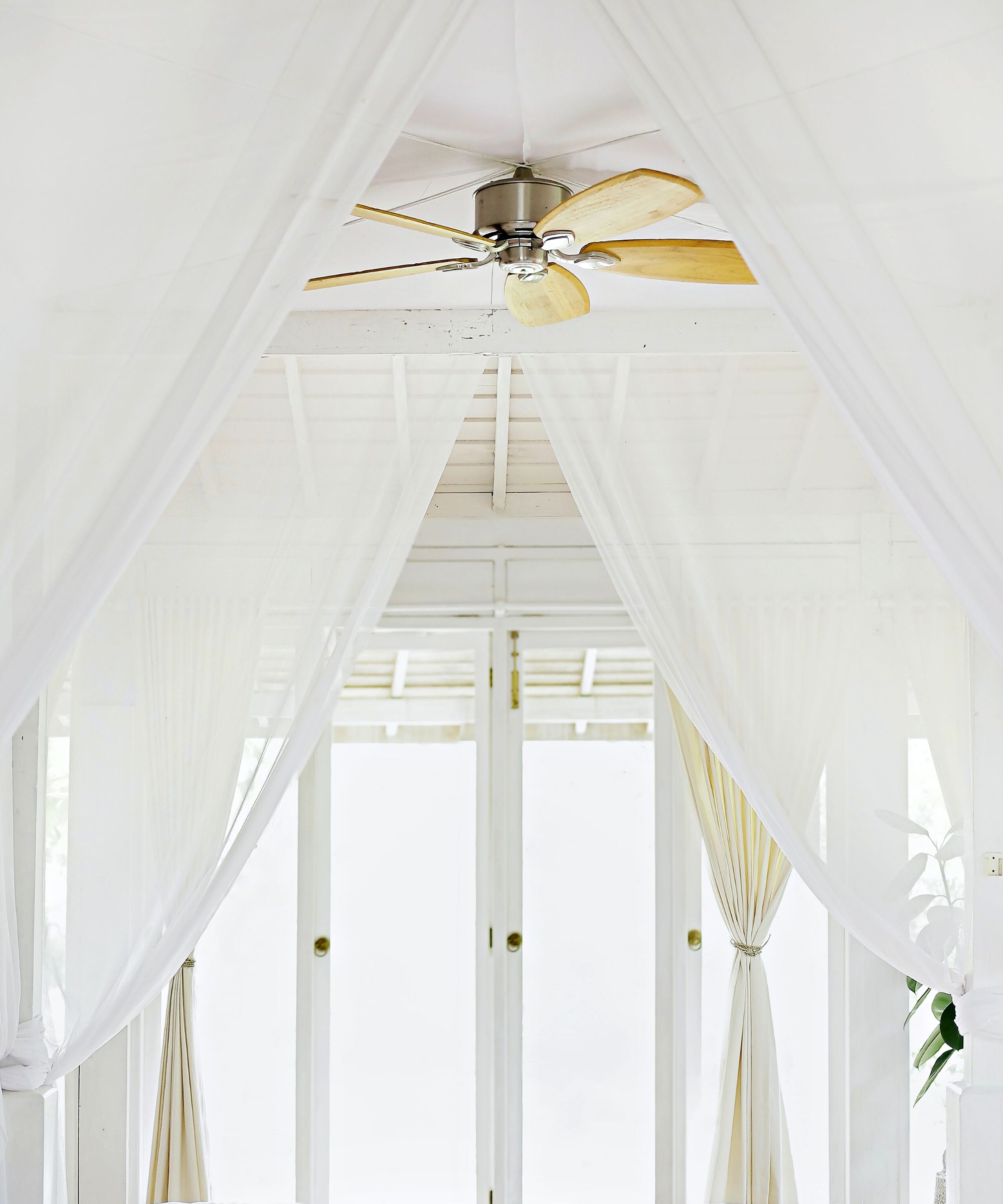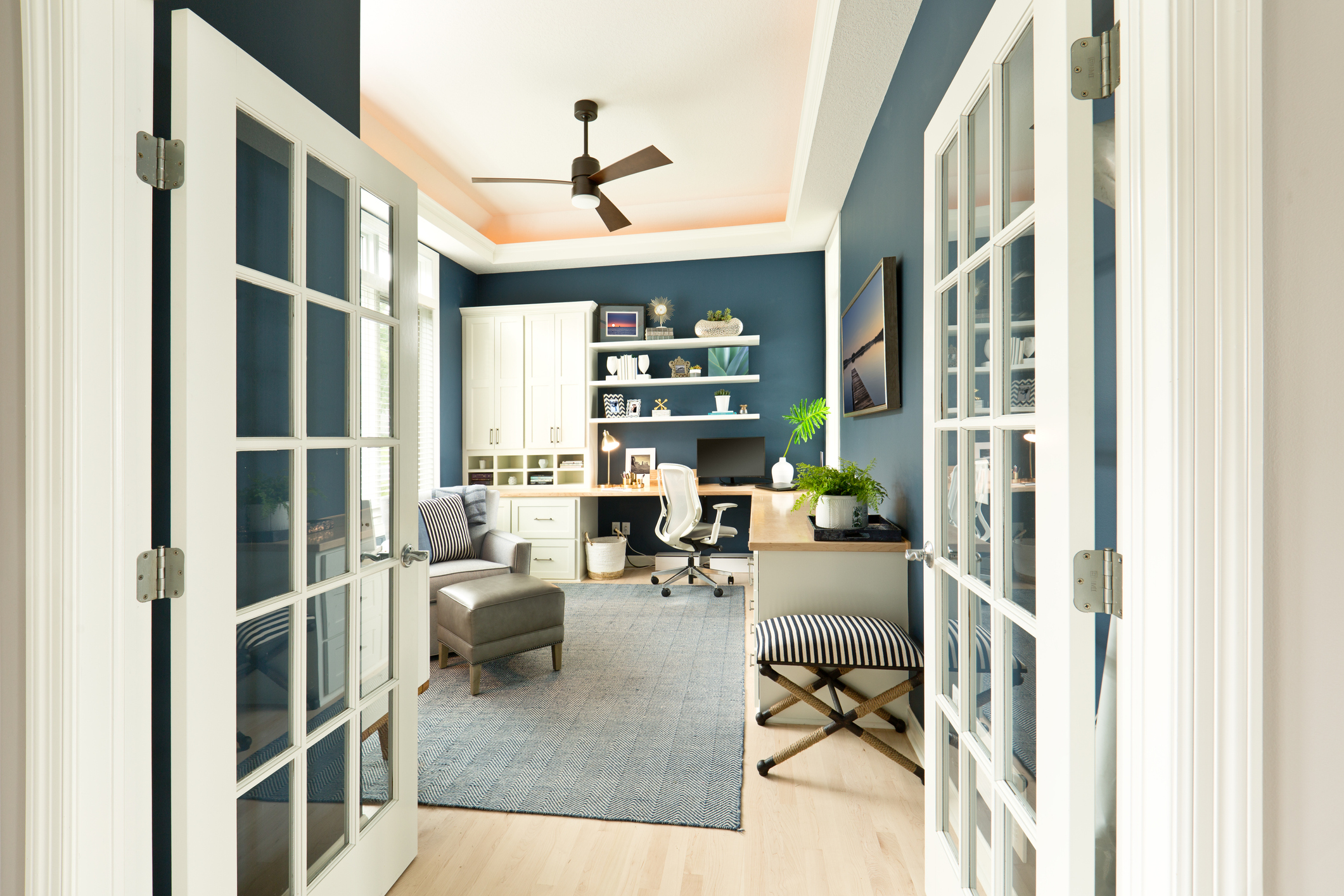
Compared to other cooling techniques, a standard fan is not the best at cooling down a room, but does the job in a pinch. That being said, there is one simple alteration that may make them a little more efficient.
When trying to cool a room with fans, the direction in which our fan blades are running could have an impact on how cool it makes us feel, according to heating and cooling experts. And changing them could not be simpler – or quicker – to help you cool down fast.
Here, we explain how to change a fan’s blade direction, and why it works so well to keep us cool.
The best fan direction to cool a room
Along with having the best fan you can afford, changing a bladed fan to run counter-clockwise can have a big impact on how cool you feel at home. It is important to note, however, this works best for a ceiling fan rather than a standing unit, says Lane Dixon, vice president of operations at air conditioning and heating specialists Aire Serv.

‘A counter-clockwise circulation of fan blades in the summer pushes cool air down to the floor, producing a wind chill effect on the skin and making a room feel up to eight degrees colder to those underneath,’ Lane explains.
Given how much air conditioning costs in comparison to how much it costs to run a fan 24/7, this fan blade direction can also work in tandem with your unit, making you feel cooler without having to turn the AC down further, Lane suggests.
‘Incorporating the use of ceiling fans can allow you to save up to 40% on cooling costs, helping you save money at home,’ he says.
Unlike air conditioning, however, changing the fan direction won’t actually affect how cool the room is, reminds Dan Mingle, vice president at heating and cooling specialists Sanders & Johnson. Instead, the breeze from the fan helps evaporate moisture on your skin, which enhances the cooling sensation, so you will only feel the effect when sat beneath or within close proximity.
To really cool down your room, consider a combination of types of air conditioning with a dehumidifier to help reduce oppressive humidity, making it easier for sweat to evaporate, and take the edge off.
How to adjust the direction of fan blades

Changing the direction of fan blades is often very simple. All you have to do is locate the blade switch on the motor housing – just remember to turn the fan off and let the blades stop spinning before putting your hands near the motor, reminds Dan Mingle, a heating and cooling specialist.
While you are up there, it is a good idea to clean the fan blades to remove dust to help prevent it from being pushed down with the circulating air and making seasonal allergies worse.
‘When looking for the switch, it may be labeled either by direction (left/right or clockwise/counter-clockwise), or by season (summer/winter), Dan mentions. ‘Check that the fan direction has changed once you slip the switch to ensure it is all in working order.’
FAQs
How do I lower the room temperature with my fan?
While a fan itself does not lower a room’s temperature, you can use it in conjunction with an air conditioning unit to recirculate cooled air. You can also make a makeshift AC unit by placing ice blocks behind a standing or table fan and having the cooled air from those pushed out by the blades.
Which way should a fan face to cool a room?
If you have a standing or table fan, then position it so that it faces towards the door so as to push hot air out of the space. You can also place fans near to sources of cool air, such as windows or air conditioning units, to push the cooler air in to replace the hot air leaving.
Once you have altered your fan direction for summer, remember to change it back again come fall. A clockwise fan direction will draw rising hot air back down towards the floor when you have your heating on to help make the room feel warmer. Forgetting to change the direction will only undo all your hard work to heat your house.







